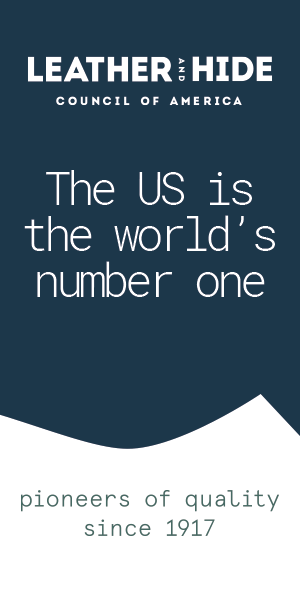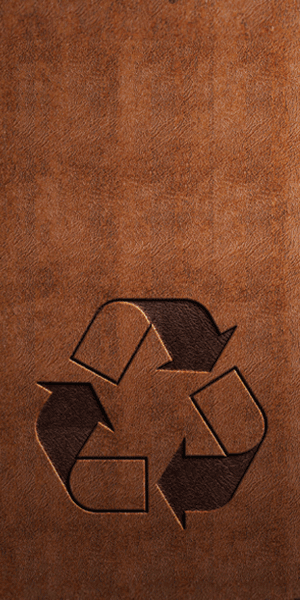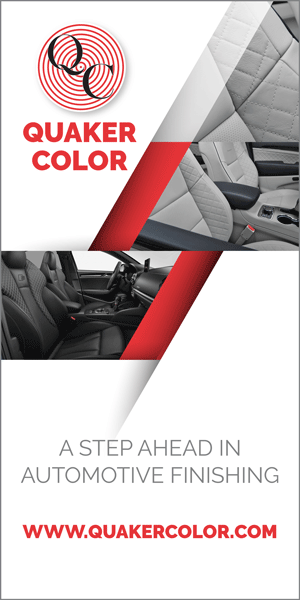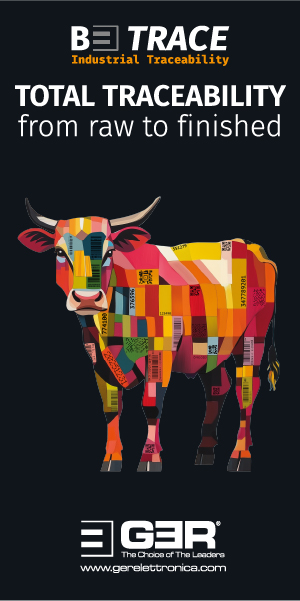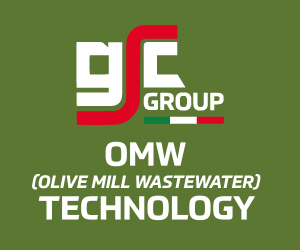United front must continue

As discussions develop around sustainable materials, the president of the Leather and Hide Council of America says the leather industry has “a wonderful opportunity” to capitalise.
It is more than eight years since you took up the presidency of the US Hide, Skins and Leather Association, one of the organisations that merged to launch the Leather and Hide Council of America (LHCA) at the start of 2020. In those eight or so years, what have been the biggest changes for the leather and hide sector in the US?
The biggest one is fairly obvious: the hide crash in 2014 and 2015. I think that redefined the industry for a lot of people. It was at that point that everybody realised we actually are in a ‘rising tide–lowering tide’ situation with everybody else in the industry. I joined at the end of 2011 and that was the tail-end of that feeling that leather always sells itself, that no hide goes unused and the hubris, almost, of where the industry was at that point. I think 2014 was the apex of that and 2015 was the reality check. Another big change was the merger that led to the launch of the Leather and Hide Council of America. And then there’s the last two years, in which we’ve also seen substantial change in the way the hide industry functions. I think it’s a lot more co-operative and that there is a willingness to do what’s necessary to tackle the big problems together.
What are the most important changes you have observed in the global leather industry in that time?
I think the crash in 2015 redefined the leather industry for a lot of people in a lot of different departments. To focus a little more on these last two-and-a-half years, I think the global industry has done a complete about-face in how it works more collaboratively than it did previously. Really, this is one of those weird by-products of the lockdowns. Just the fact of everyone meeting via Zoom and other face-to-face communications tools, I think that has changed the way the international organisations work together. We never used to have that face-to-face co-operation. For years, there was Hong Kong and Shanghai and that was it.
How would you describe the impact that LHCA’s ‘Real Leather, Stay Different’ competition has made since its introduction?
It has been a little bit of a surprise how well it has worked. It didn’t help that we launched it just before a global pandemic, but when you see a full, completed, start-to-finish competition, in Taiwan for example, it’s wonderful what it’s been able to do, educating an entire generation of design students. It has delivered the content we were looking for, feeding into a lot of our social media channels and sets a good base for where the industry will be in the future. From that perspective, it has been wonderful and now we just need to make more people aware of it so that we can expand it further. At the moment, we have the UK, Taiwan, China, the Nordics and the international final for 2022 will be in September in London. We have put together a toolbox of how to run a Real Leather, Stay Different competition and we can hand it out to partners and they can decide which tools to use.
In 2019, LHCA began calculating the number of US hides that seem certain to have gone to waste. It must have been disappointing for you to find that 5.5 million hides went to waste in 2019 and a further 4.8 million in 2020, but what are the ways in which being able to put a number on this problem has helped LHCA present its pro-leather arguments to legislators, brands and consumers?
It has been extremely helpful to have this talking point, and it’s not just a talking point either. It has been helpful with brands more than anybody, and with some fashion media outlets. A lot of them have been in this fantasy that if they stop using leather they will reduce animal slaughter. We all know that’s not true, but we had to put some numbers behind it. It’s changed the narrative and helped our argument quite a bit. Interestingly, when we first did it, it was the leather industry that pushed back most on it, asking us to show where the 5.5 million hides were. But it’s not the big guys; it’s the small guys doing ten, 15 or 20 head per day who now don’t have anywhere to send the hides, so they go into landfill. Multiply that across the US and the number becomes big. The methodology is really simple. We know US slaughter numbers from the US Department of Agriculture. We know US exports from customs data, and we took a historical view of what percentage of hides didn’t get exported. That gave us a pretty good understanding of how many hides, historically, had stayed in the US, probably for domestic consumption. That ended up being around 5% of slaughter. Is it a perfect number? No, but it’s probably the best we can do.
Do you know the number of US hides that went to waste in 2021?
We haven’t looked at it yet. We know that our exports were higher in 2021 and I think we are going to be closer to that 5% number for domestic consumption. Anecdotally, we still received calls from the small operators who wanted to know what to do with the hides they had, saying they did not know where to go with them. Those calls still come in every week, but the number of wasted hides looks like being a lot lower than in 2020; a lot more of the hides made their way into the supply chain.
What led to the start of LHCA’s dialogue with the Sustainable Apparel Coalition (SAC) about the Higg Materials Sustainability Index (MSI)?
It was a chart that somebody on the alternative materials side pulled from 2017, listing the impact for all the material types, based on the MSI. Cow leather was double, triple, quadruple everything else on the list. It was around 2019 when I saw this and I realised it was one of the major drivers of the market situation we were facing at that point and the substitution of leather that was happening. I wasn’t the only one who saw it: the wool industry, the silk industry, every other natural material that is out there was seeing the same chart and experiencing the same problem as we were. When the wool industry first and then the silk industry said they wanted the scores for their materials to be retired from the MSI, we decided to jump on the bandwagon and say the score for leather should be retired as well. We shot across the bow of the Sustainable Apparel Coalition and then they reached out and said let’s have a dialogue about how we can make this better. So we entered into a dialogue. It wasn’t totally one-sided and they shared a lot of information with us, but the more they shared, the more frustrated we became, frankly. When you meet the people at the SAC, though, you can see that they care, that they are good people and they very much want to be on the right side of history with this, but they have been working with a framework and a toolkit that were not fit for purpose. Reading between the lines in their statements, I think they realised this but, when they did, they were already backed into a corner at that point and didn’t know how to get out of it. I think the Norwegian Consumer Authority development [it demanded in June that a clothing brand, Norrøna, stop using the Higg MSI as a basis for sustainability claims about some of its garments] could be one of the straws that broke the camel’s back for them. This could be when they realised this is no longer a PR issue.
You have said publicly that LHCA worked with New York Times reporter Hiroko Tabuchi in the build-up to her June 12 article about the Higg MSI. How would you sum up the importance of that breakthrough, of having a prominent journalist on a prominent newspaper take interest and write a fair account of the dispute between the leather industry and the SAC?
Yes, there were a couple straws that broke the camel’s back and I think The New York Times was a big straw. There was an article a couple weeks before that by [non-profit news organisation] The Intercept that said much the same thing, but I don’t think The Intercept was a big enough outlet. The New York Times is the outlet that really drives it home, and I think you pair that with the regulatory loss they suffered. I think it forced their hand at that point. LCAs are complex vehicles. You cannot compare LCAs unless they have exactly the same structure and exactly the same conditions, and that’s what they, the SAC, are attempting to do. It’s like saying, ‘I’m going to explain physics in a very easy way to consumers’. Physics is complex. There’s a lot to it. Another big problem they have is that they don’t own their data. They are basically leasing their data from one of the big datahouses. And they have a problem with transparency because they are contracted for the data and they can’t release it. I just think that the fundamental structure of how they are built is a problem. The purpose is in a good place; the purpose makes sense but how they built it was a house of cards to begin with.
What was your reaction when the SAC announced on June 27 that it was “pausing its consumer-facing transparency programme”?
I'm happy that they have taken this on themselves. This is what we wanted all along. When we reached out to them and put out our manifesto [a joint manifesto signed by more than 30 leather industry organisations around the world and published in late October 2021] it was to retire the score until they had all the data. That’s exactly what they’ve said they’re going to do: retire or pause the score until they have the right data and the right structure. I’m happy to see that they’ve taken it upon themselves to get here. We’ve been ready the entire time to make sure they have the right data and that they are accurately representing the industry. We will be right there with them to do that as well. There is a little bit of schadenfreude. I try not to dwell on that for too long because we still have a lot of work to do. That’s the next step. We have opened a door, that’s all. Now we have to walk through it and give them what they need.
What do you think will happen next with the Higg MSI and the SAC?
A number of parties are having conversations [with the SAC]; LHCA is not the only one. The Leather Working Group has engaged, so has Leather Naturally. Many people are trying to figure out this situation of working out how we get primary data and information into this system. I would encourage industry members to engage, but I would say they should try to work through the existing channels as opposed to ploughing your own. There is a fair amount of work that has already been done there. That has opened up a little bit of dialogue and that, I think, will benefit everybody, including individual companies. They [the SAC] are not going anywhere. I think they do occupy an important position in the apparel industry, in the fashion industry. They, I think, need to have a little bit of a ‘Come to Jesus’ moment on the transparency, on the underlying data, on the framework and the structure of the entire system. I think they have a bit of an issue monetising some of this. That might be a step they also need to rethink because I don’t think people are going to trust a private company on some of these aspects. They have a lot of thinking to do. I think they can make this work; they just have to open themselves up to a lot more input and scrutiny.
What are your ambitions for the leather industry in the US and globally in the time ahead when, let’s hope, covid-19 and war are behind us?
The US industry is in a situation where our success is the global leather industry’s success. So it’s hard for me to decouple them in some ways but I think we have a wonderful opportunity. As discussions develop around sustainable materials, circular materials and materials that will not be with us forever, I think the leather industry has a wonderful opportunity to capitalise on that. So I want to see that happen in the next, whatever the time frame is, two-to-three years. I think the Higg Index and the action the industry took around that was a wonderful model of how we get that done. We started two-and-a-half years ago, we brought all the players together that needed to be at the table and we all set our sights on the target. And we got to where we needed to get to go with it. I think we need to use that as a model and replicate it in other areas as well. We started with the United Nations Climate Change Conference (COP26) last year as an example, and I think there’s a lot of work to be done there and that there are plenty of others. So I want to see that template that we’ve developed copied and pasted and replicated in other areas.
President of the Leather and Hide Council of America, Stephen Sothmann.
Credit: LHCA







